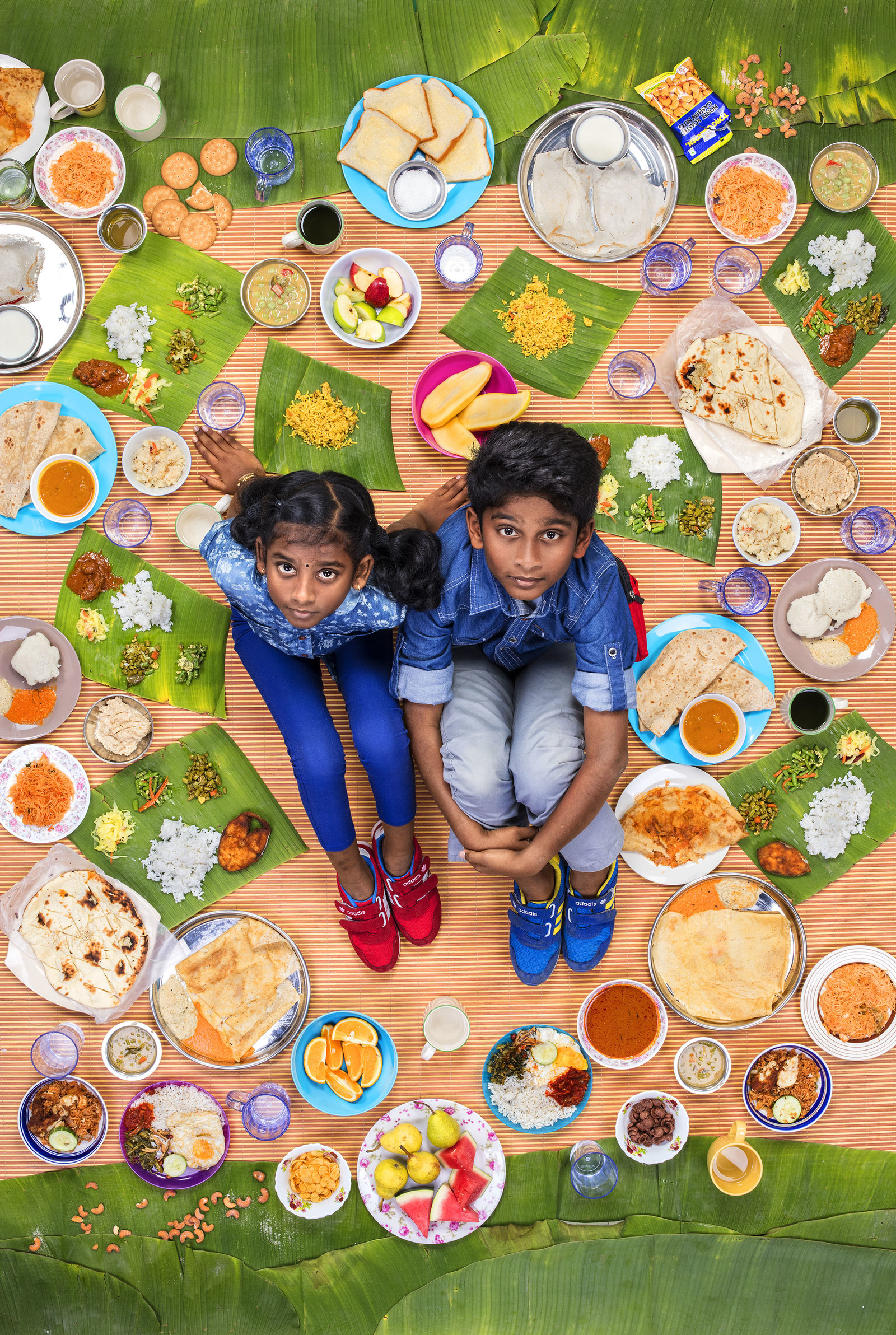Altadena, California, USA — Alexandra Lewis, 9 (left), and Jessica Lewis, 8

Photographer Gregg Segal is an expert at visualizing our personal impact on the world around us. In his 2014 series 7 Days of Garbage, Segal illustrates the enormous amount of garbage that most people will toss in a single week by photographing his subjects literally posed in a week's worth of trash. For his new book, Daily Bread, Segal shifts his focus from the things we waste to the things we consume by visualizing what an entire week's diet looks like for children around the globe.
To ensure that the project accurately captured what kids are really eating in the 21st century, Segal enlisted the help of children from all sorts of cultural and economic backgrounds, asking each of them to keep a journal of what they eat every day. At the end of the week, Segal had a team of chefs prepare the dishes for a portrait session with each kid. The results bring a striking perspective on the differences and similarities between diets across borders and classes.
Here, Gregg Segal shares a selection of portraits from Daily Bread and discusses what he observed while researching how children eat.
Nice, France — Rosalie Durand, 10
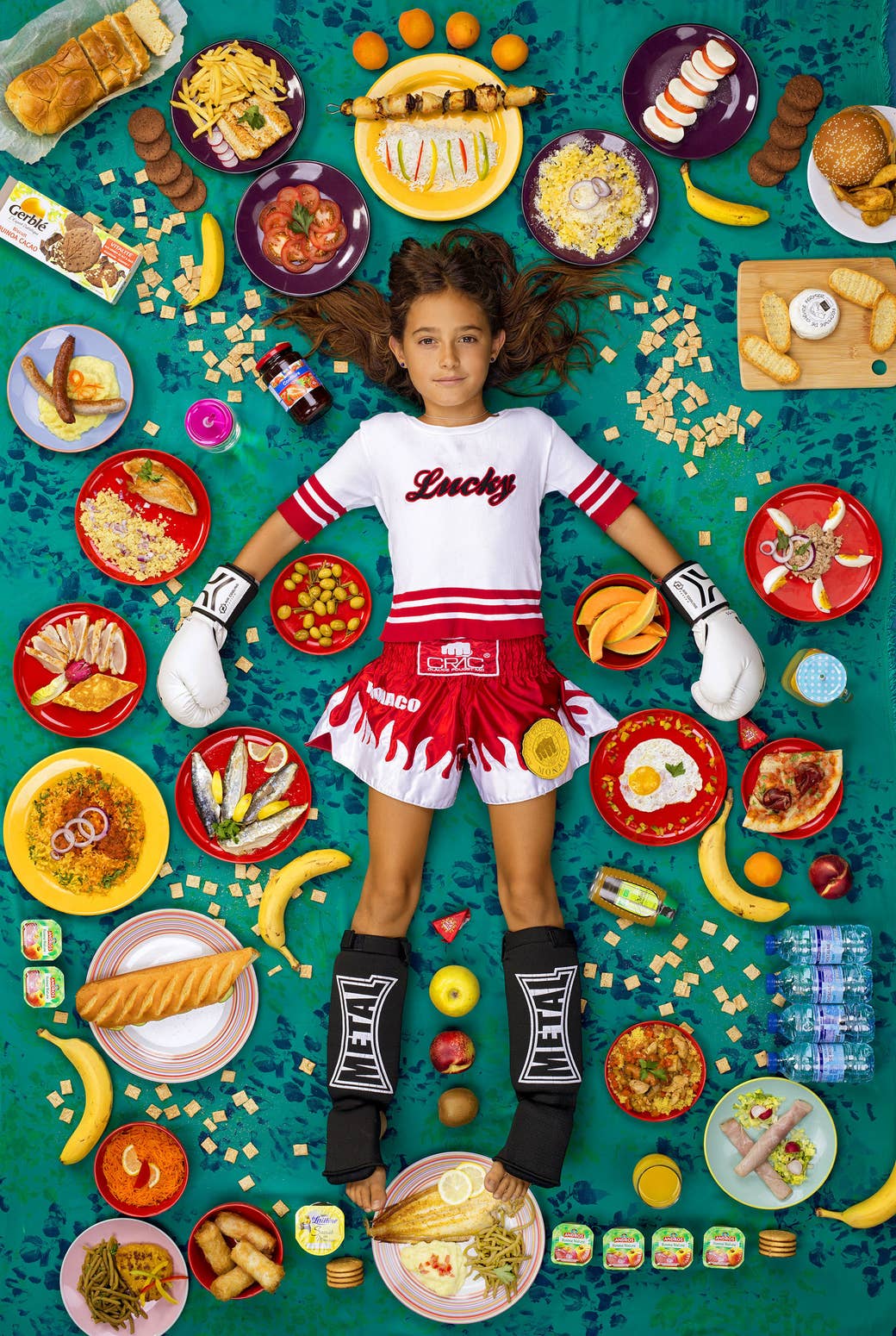
Where did the idea for Daily Bread begin?
Gregg Segal: Daily Bread grew out of 7 Days of Garbage. I began to ask, how have our diets been impacted by this revolution in the way food is produced and consumed? I thought, what if we keep a journal of everything we eat and drink for one week to bring our focus onto diet and take ownership of the foods we eat? I focused on kids because eating habits start young — and if you don’t get it right when you’re 9 or 10, it’s going to be a lot harder when you’re older!
What goes into making each of these pictures?
GS: For the overseas shoots, I needed a producer in each country to find the kids. The goal was to represent a diversity of diets in each location. If the rate of obesity in a given country was 25%, I aimed to reflect this percentage in my small sample of kids.
Each kid kept a journal of everything they ate for one week. At the end of the week, producers collected the journals, checked to make sure they were complete, and then handed them off to the cooks, who would shop for all the ingredients and reproduce all of the meals. I photographed as many as five kids a day, so the cooks were responsible for preparing over 100 meals. These were often 14-hour days for the food preppers. It was demanding and exhausting!
Long Beach, California, USA — Isaiah Dedrick, 16
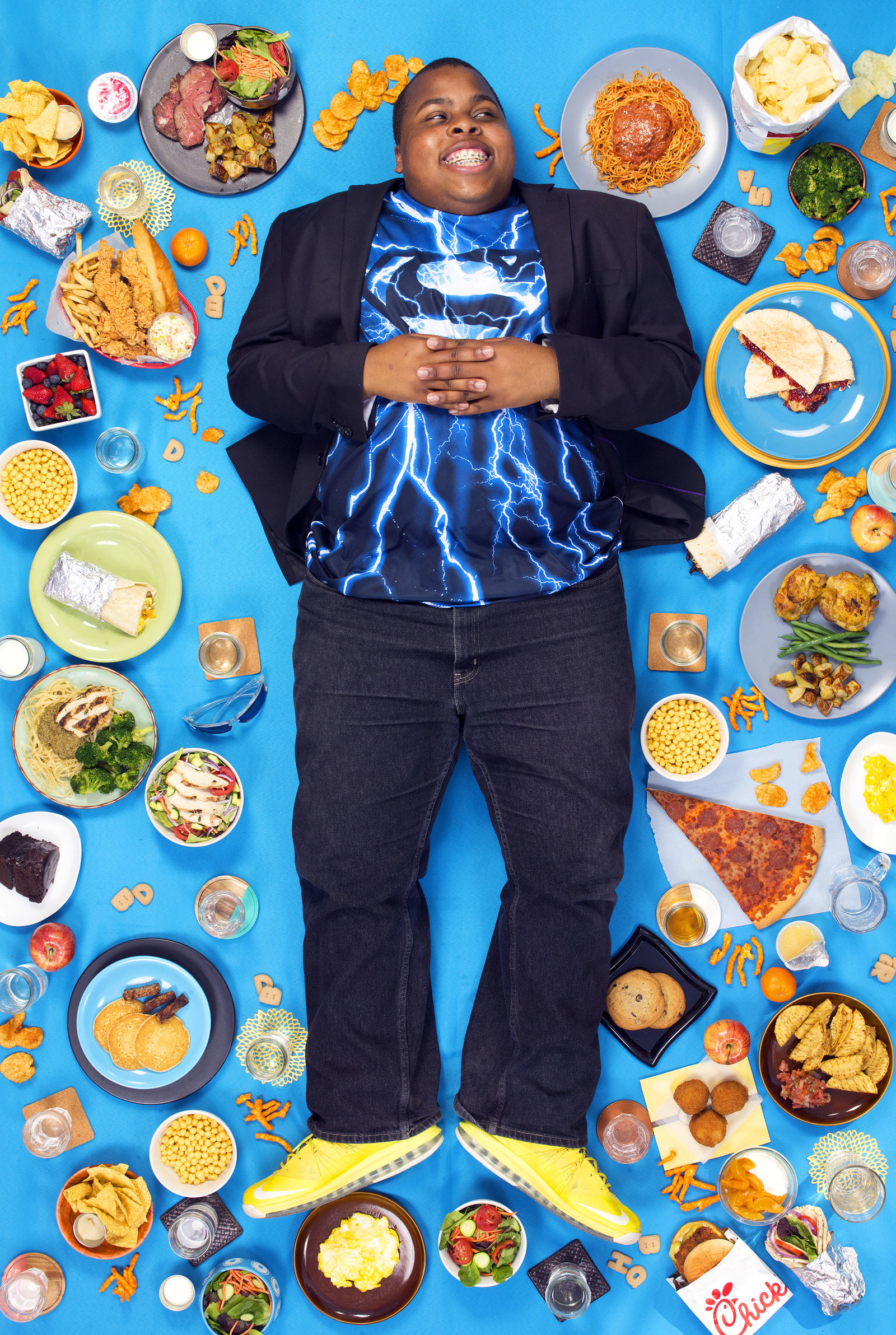
Upper Xingu region of Mato Grosso, Brazil — Kawakanih Yawalapiti, 9

Once all the food was prepped and plated, I’d arrange the dishes and other elements in the frame. Sometimes I’d have the luxury of a food stylist to collaborate with, though often it was just me doing the styling.
Can you speak to the major differences in the diets of US children versus those of children in elsewhere?
GS: It’s the similarities, not the differences, that are noteworthy. The children I met have distinct personalities and diverse hobbies, yet they’re often eating in eerily similar ways.
Compare the diets of Paulo from Sicily and Isaiah from Los Angeles. In the past, a Sicilian boy would have grown up eating very different foods from his counterpart in the US, but now their diets are converging. Both Paulo and Isaiah eat french fries, burgers, pizza, pasta, and white bread. They live continents apart, but it’s as if the boys’ parents have been shopping at the same global superstore!
Dakar, Senegal — Meissa Ndiaye, 11
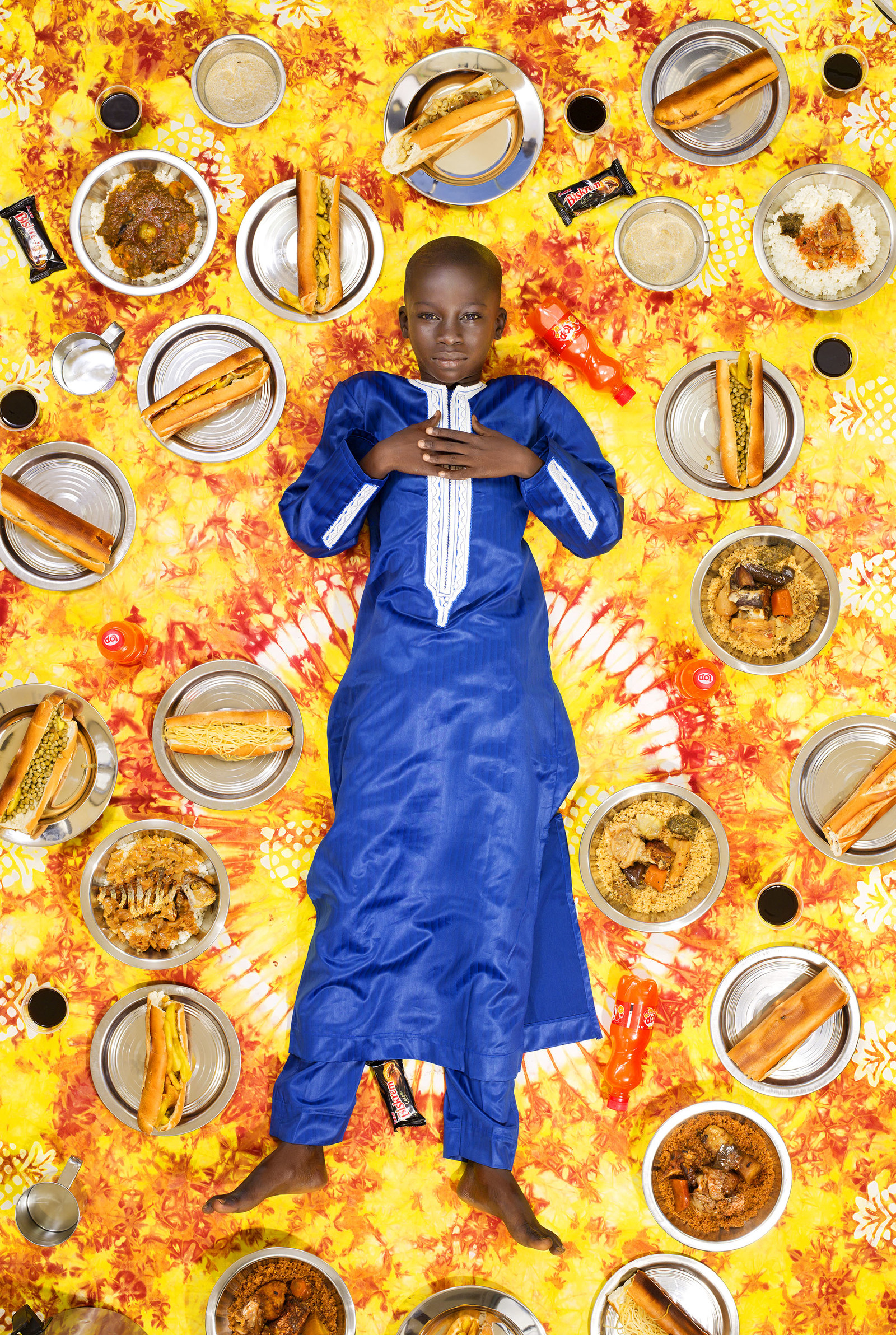
Mumbai, India — Anchal Sahani, 10

How much has globalization affected the diets of children around the world?
GS: Enormously. I think we’re at a tipping point. The balance of what most children eat now is dramatically tipping away from homemade stews and vegetables towards ultra-processed, packaged foods and snack foods, many of them designed to appeal to children.
For instance, Milo chocolate milk, which is drunk by kids from Hamburg to Sao Paulo and Mumbai to Dubai. The same story is playing out all over the world, often with the same branded foods marketed by the same multinational corporations.
Was there anything entirely unexpected you learned from researching these diets?
GS: One of the most surprising lessons of Daily Bread: The best-quality diets are often eaten not by the richest, but those living in poverty.
In the US, people from low-income are the biggest consumers of junk food because it’s convenient and cheap. But in Mumbai, it costs $13 for a medium Domino’s pizza, which is way beyond the means of most people — like 10-year-old Anchal, who lives with her family in an 8-by-8-foot aluminum hut. Her father earns less than $5 a day and her diet includes no fresh fruit, yet she eats a wholesome and traditional diet of okra curries, lentils, and roti, which Anchal’s mother cooks from scratch each day on a single kerosene burner.
Shraman, 12, lives in a middle-class Mumbai high-rise and eats very differently. His family’s extra income means he can afford Domino’s pizza, fried chicken, and treats like Snickers bars and Cadbury chocolate.
Kajang, Malaysia — Nur Zahra Alya Nabila Binti Mustakim, 7
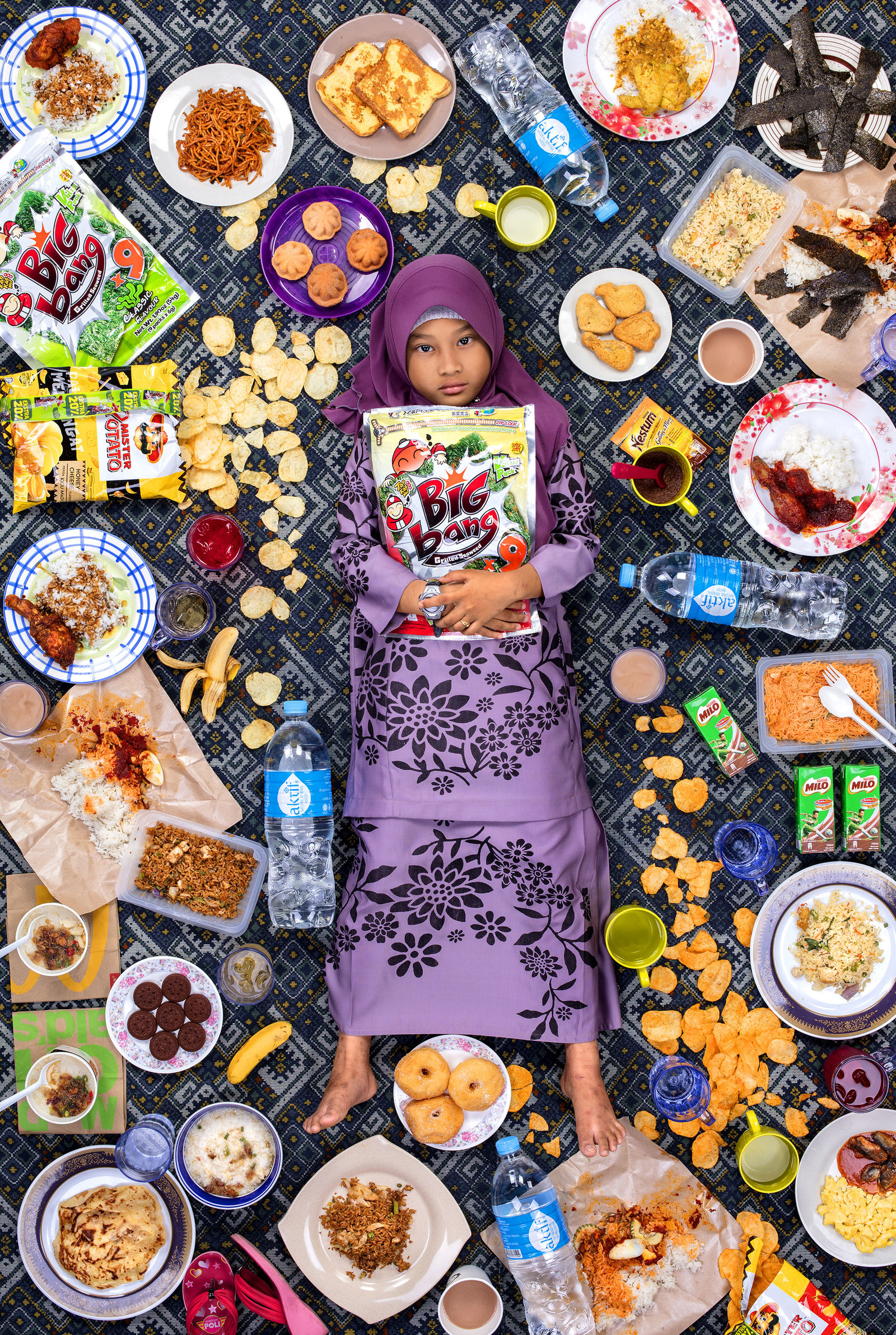
Gombak, Malaysia — Altaf Rabbal DLove Bin Roni, 6

What do you hope people will take away from these images?
GS: For me, photography is collaboration. It’s a process that invites reflection from both the subject of the pictures as well as the viewers.
While I was photographing Adveeta, this 10-year-old in an elegant yellow dress, her father watched as the pictures came up on my laptop. He shook his head and said, “I can’t believe Adveeta is eating all that junk! I’m going to have to talk with her mother!”
I remember a single mom in Los Angeles who looked at all the junk food in her daughter’s diet and blamed her ex-husband. “Except for that bowl of broccoli! That was the night she was home with me!” Parents are blaming each other all over the world because of this project — which tells me that it’s helping to move the needle on diet. This project that we undertook together has a life beyond our interaction. Potentially, it has a lifelong impact.
Kuala Lumpur, Malaysia — Beryl Oh Jynn, 8
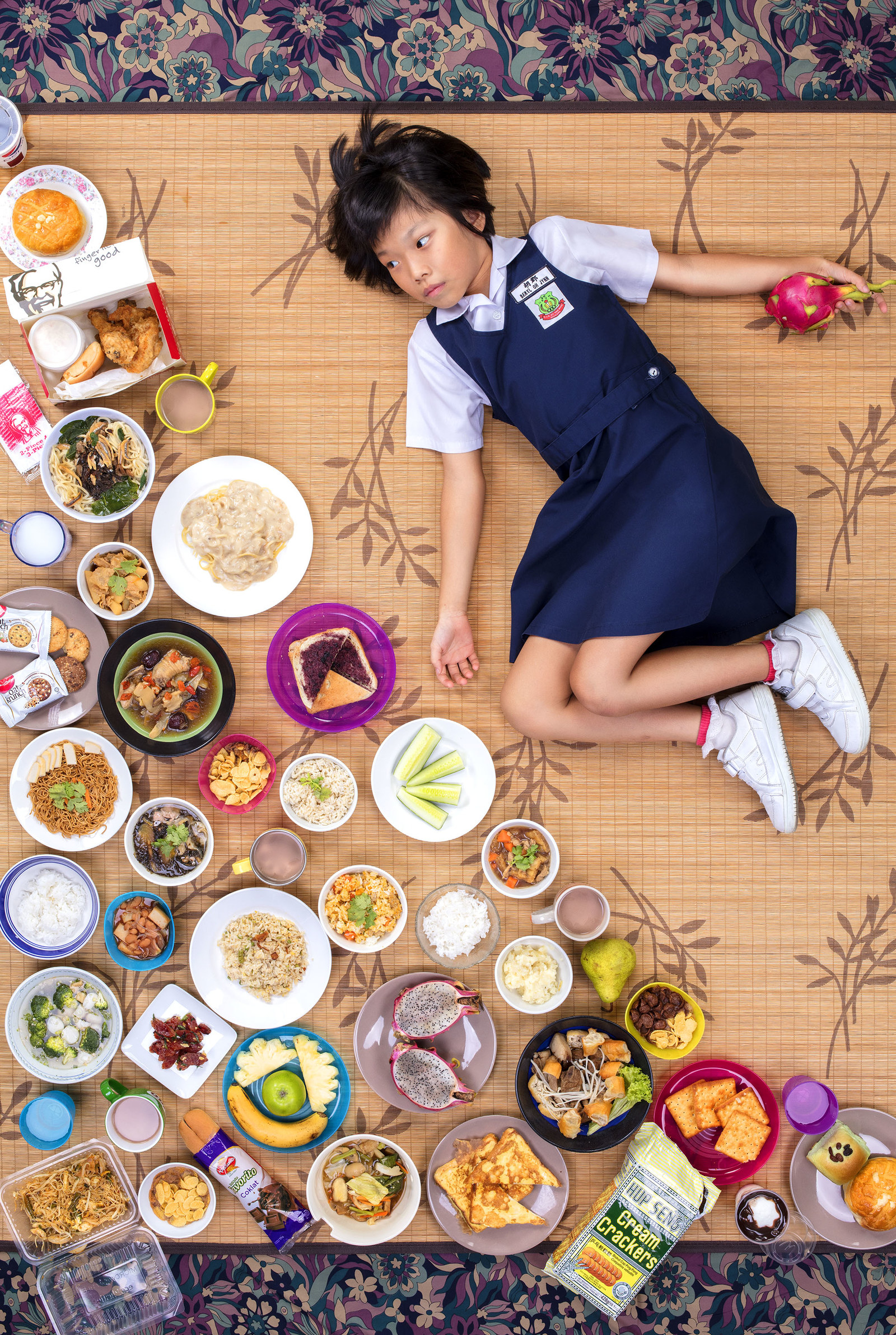
Hamburg, Germany — Greta Moeller, 7

The collaboration extends to viewers too. I encourage kids who look at these pictures to ask a few simple questions about their own diets:
1. How many of the foods you eat come straight from the garden, and how many are processed and packaged? Try to replace some of the processed foods in your diet with whole foods.
2. How many ingredients are in the packaged foods? Are there more than five? Avoid foods with more than five ingredients. Especially avoid ingredients you can’t pronounce!
3. How many of the foods you eat are featured in a TV commercial? Avoid foods that have a commercial.
4. How many colors are in the foods you eat? If your diet is all white, yellow, and brown, you’re not getting enough vitamins and nutrients. It’s that simple!
5. Is there anything green in your diet?
Dubai, United Arab Emirates — Yusuf Abdullah Al Muhairi, 9
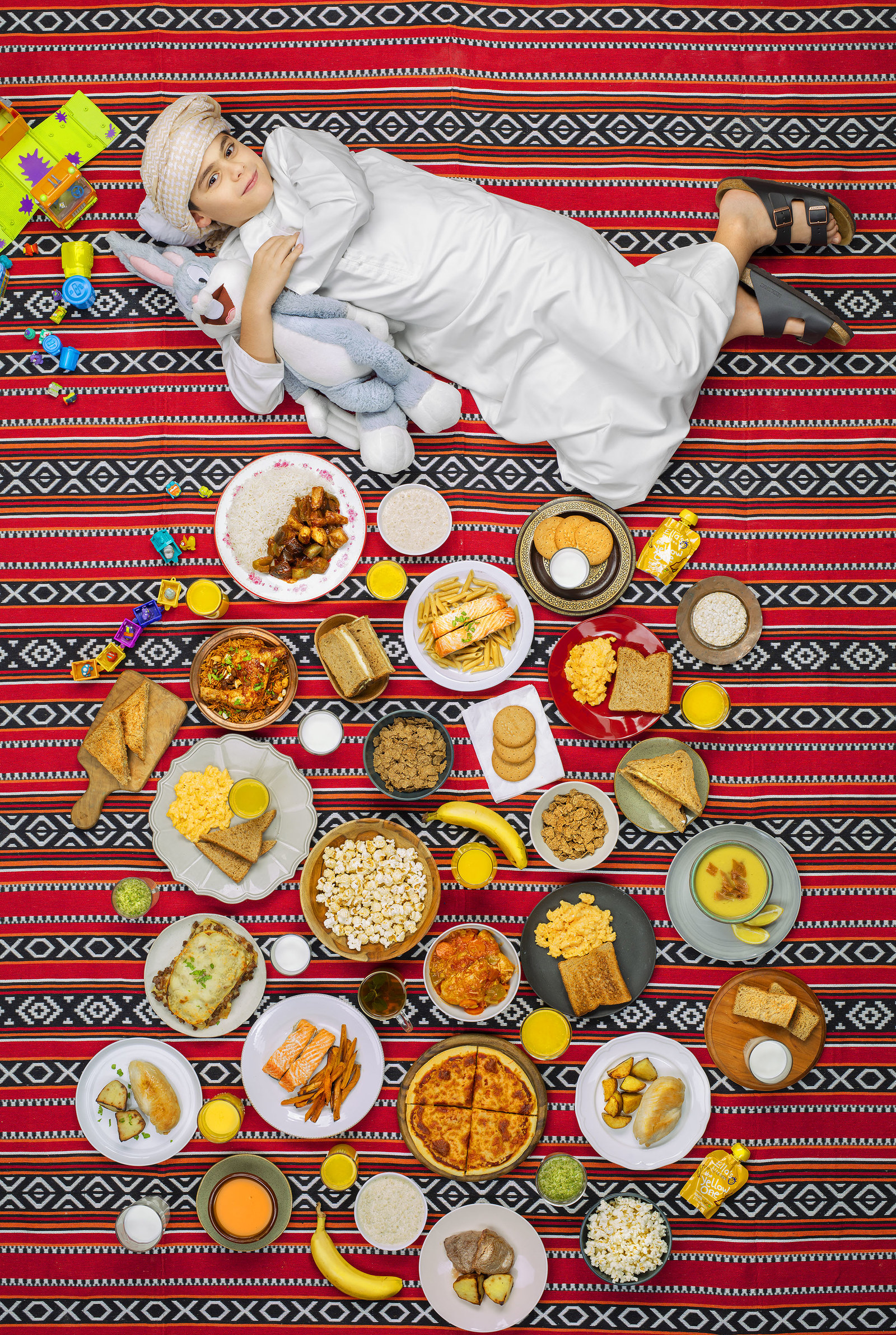
Kuala Lumpur, Malaysia — Mierra Sri Varrsha, 8 (left), and Tharkish Sri Ganesh, 10
